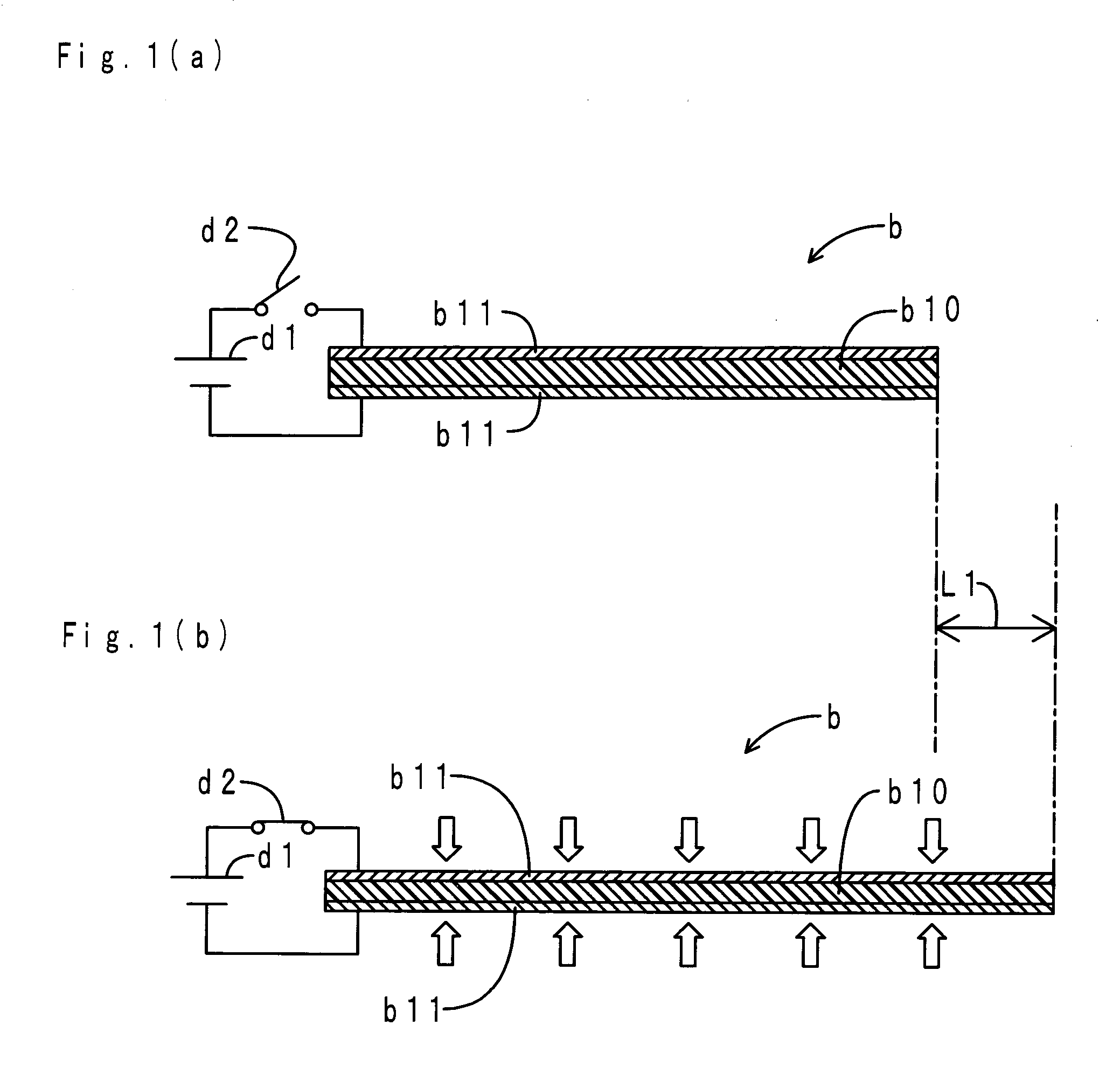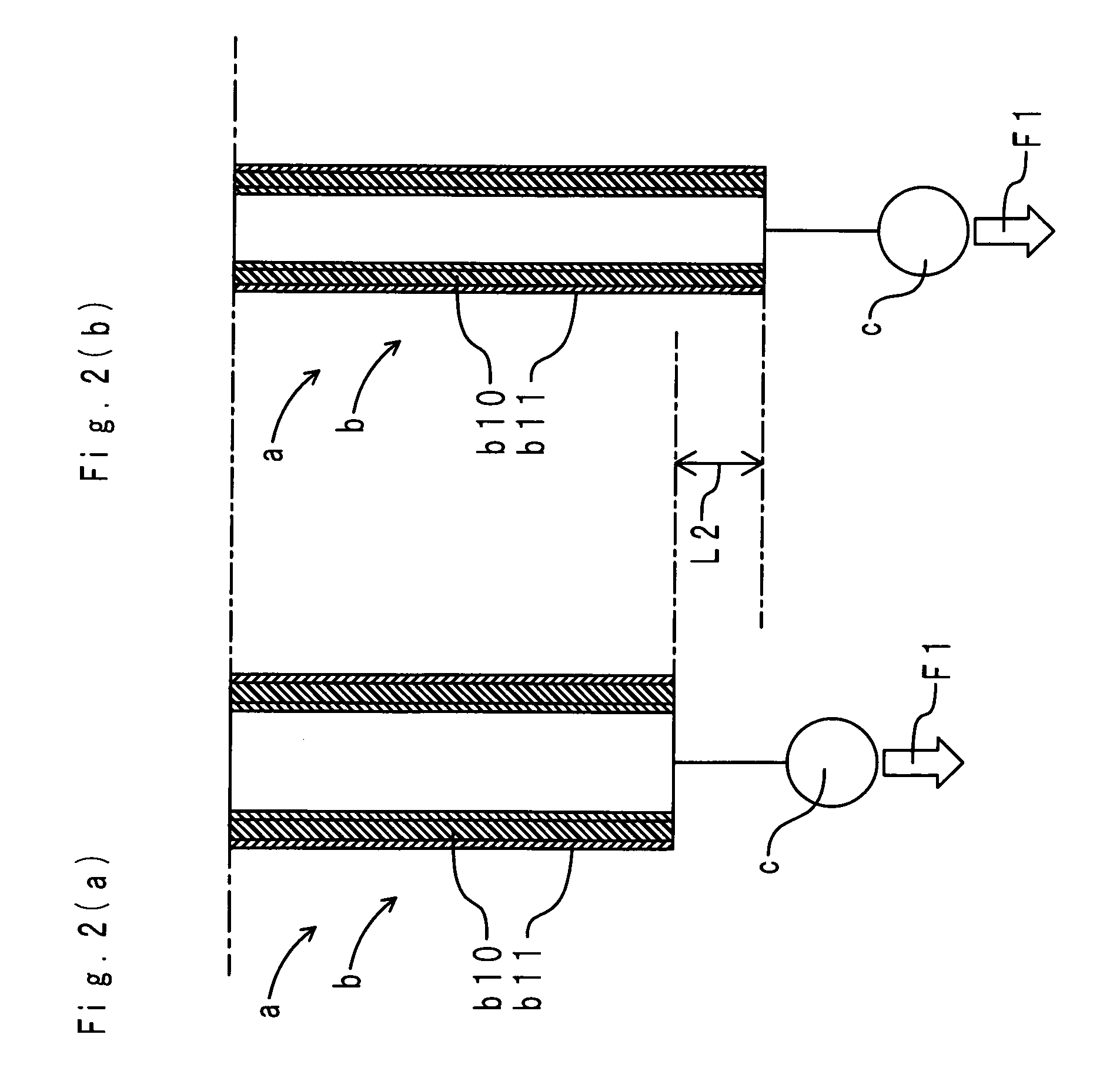Actuator
a technology of actuators and actuators, applied in the field of actuators, can solve the problems of difficult to make the actuator thin and small, difficult to embody a flexible movement, and the actuator element to be caught in the pitch of the coil spring, etc., and achieves the effect of easy making a small size and large displacemen
- Summary
- Abstract
- Description
- Claims
- Application Information
AI Technical Summary
Benefits of technology
Problems solved by technology
Method used
Image
Examples
first embodiment
Constitution of Actuator
[0068]First, a constitution of the actuator of this embodiment is described below. FIG. 3 shows a perspective view of the actuator of this embodiment. FIG. 4 shows a perspective exploded view of the actuator element in the actuator. FIG. 5 shows an axially-perpendicular sectional view of the actuator. FIG. 6 shows an axially sectional view of the actuator. As shown in FIGS. 3 to 6, the actuator 1 of this embodiment has an actuator element 2 and a coil spring 3. The coil spring 3 is included in an elastic member (a load member) of the present invention.
[0069]The actuator element 2 has a core material 20, a spiral tube member 21 and a base member 22. The axially-perpendicular diameter of the actuator element 2 is about 5 mm. The core material 20 is made of an elastomer and is formed of a round rod shape. The upper-end of the core material 20 is fixed via a wire material 90 to an upper member (not shown).
[0070]The spiral tube member 21 is annularly installed aro...
second embodiment
[0085]The difference between the actuator of this embodiment and the actuator of the first embodiment is that in the actuator of this embodiment, a laminated tube member is arranged in place of the spiral tube member. Thus, only the difference will be explained here.
[0086]FIG. 8 shows an axially-perpendicular sectional view of the actuator of this embodiment. Further, the parts corresponding to those in FIG. 5 are indicated by the same symbols. As shown in FIG. 8, the actuator element 2 of the actuator 1 of this embodiment has laminated tube member 23. The laminated tube member 23 is annularly installed around the core material 20.
[0087]The laminated tube member 23 is formed such that three-layer dielectric films 230 and four-layer electrodes 231 are alternately laminated concentrically as if a tree ring. That is, a pair of the electrodes 231 is arranged on both the radial sides of any dielectric film 230.
[0088]The actuator 1 of this embodiment can be manufactured by dipping the cor...
third embodiment
[0090]The difference between the actuator of this embodiment and the actuator of the second embodiment is that no core material is arranged. Thus, only the difference will be explained here.
[0091]FIG. 9 shows an axially-perpendicular sectional view of the actuator of this embodiment. Further, the parts corresponding to those in FIG. 8 are indicated by the same symbols. As shown in FIG. 9, the actuator element 2 of the actuator 1 of this embodiment has laminated extensible member 24. The laminated extensible member 24 is formed such that three-layer dielectric films 240 and four-layer electrodes 241 are alternately laminated concentrically as if a tree ring. That is, a pair of the electrodes 241 is arranged on both the radial sides of any dielectric film 240.
[0092]The actuator 1 of this embodiment can be manufactured by drawing the core material 20 (see the above-mentioned FIG. 8) after manufacturing the actuator of the above-mentioned second embodiment. Also, it can be manufactured ...
PUM
 Login to View More
Login to View More Abstract
Description
Claims
Application Information
 Login to View More
Login to View More - R&D
- Intellectual Property
- Life Sciences
- Materials
- Tech Scout
- Unparalleled Data Quality
- Higher Quality Content
- 60% Fewer Hallucinations
Browse by: Latest US Patents, China's latest patents, Technical Efficacy Thesaurus, Application Domain, Technology Topic, Popular Technical Reports.
© 2025 PatSnap. All rights reserved.Legal|Privacy policy|Modern Slavery Act Transparency Statement|Sitemap|About US| Contact US: help@patsnap.com



